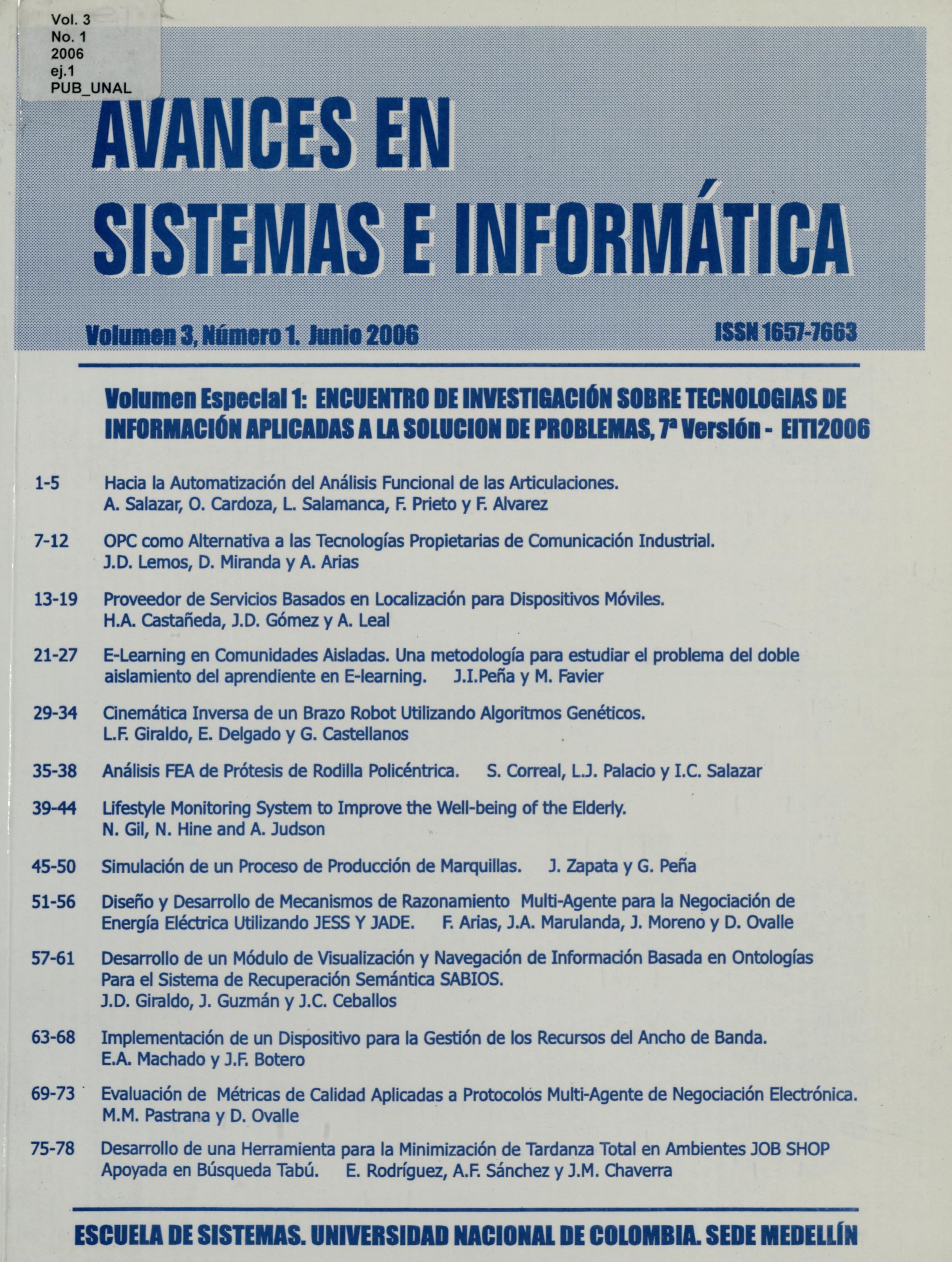Lifestyle Monitoring System to improve the well-being of the elderly
Palabras clave:
Well-being of the elderly, Lifestyle Monitoring Systems-LMS, Lifestyle of the elderly (en)Descargas
The size of the ageing population is growing fast because people are living longer and environmental and social conditions are changing. This paper will report a study to design and develop a technological solution that helps to improve the independence and well-being of the elderly. We initially read some literature about telecare, lifestyle monitoring systems, well-being, smart-houses, and pervasive computing; topics which are all relevant, for our research project. We then started to understand the data gathered from the array of sensors collected into a database in order to present useful information to the end user through Online Analytical Processing (0LAP). In the second stage, we will analyse the information required to find rules, patterning sequences, which reveal hidden data and will enable us to predict changes using data mining techniques.
Referencias
Alwan, M., Leachtenauer, J., Dalal, S., Kell, S., Turner, B., Mack, D., and Felder, R. (2005), ‘Case report validation of rule-based inference of selected independent activities of daily living, Telemedicine and e-Health 11(5), 594- 599.
Barger, T., Brown, D. and Alwan, M. (2005), ‘Health-status monitoring through analysis of behavioral patterns’, IEEE Transactions on Systems, Man, and Cybernetics Part. A: Systems and Humans 35(1), 22-27.
Brown, S., Hine, N., Sixsmith, A. and Garner, P. (2004), ‘Care in the community’, BT Technology Journal 22(3), 56-64.
Celler, B., Earnshaw, W., Ilsar, E., Betbeder-Matibet, L., Harris, M., Clark. R., Hesketh, T. and Lovell, N. (1995), ‘Remote monitoring of health status of the elderly at home’, International Journal of Bio-Medical Computing 40(2), 147-155.
Cook, D., Youngblood. M., Heierman-HI, E., Gopalratnam, K., Rao, S., Litvin, A. and Khawaja, F. (2003), Mavhome: An agent based smart home, in ‘Proceedings of the First IEEE International Conference on Pervasive Computing and Communications -PerCom 2003’, pp. 521-524.
Dalal, S., Alwan, M., Seifrafi, R., Kell, S. and Brown, D. (2005), A rule-based approach to the analysis of elders. Activity Data: Detection of health and possible emergency conditions, in ‘AAAI 2005 Fall Symposium, Workshop on Caring Machines: AI in Eldercare, Arlington, VA’.
Doughty, K., Cameron, K. and Garner, P. (1996), ‘Three generations of telecare of the elderly’, Journal of Telemedicine and Telecare 2(2), 71-80.
Fisk, M. (2003), Social Alarms to Telecare. Older people's services in transition, Bristol, The Policy Press.
Helal, S., Mann, W., El-Zabadani, H., King, J., Kaddoura, Y. and Jansen, E. (2005), ‘The gator tech smart house: A programmable pervasive space’, IEEE Computer Society 38(3), 64-74.
Hine, N., Judson, A., Ashraf, A., Arnott, J., Sixsmith, A., Brown, S. and Garner, P. (2005), Modeling the behaviour of elderly people as a means of monitoring well being, in ‘10th International Conference on User Modelling, Edinburgh, Scotland'.
Intille, S. (2002), ‘Designing a home of the future', IEEE Pervasive Computing 1(2), 76-82.
Mynatt, E., Rowan, J., Jacobs, A. and Craighill, S. (2002), Digital family portraits: supporting peace of mind for extended family members, in ‘Conference on Human Factors in Computing Systems - Proceedings’, pp. 333- 340.
Porteus, J. and Brownsell, S. (2000), Using telecare exploring technologies for independent living for older people, Technical report, A report on the Anchor Trust/BT Telecare Research Project, Anchor Trust. Oxon, England.
Seidman, C. (2001), Data Mining with Microsoft SQL Server 2000, Microsoft Press 2001, USA.


















